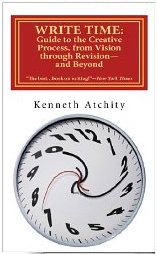A friend asks:
When you first started your career as a writer, was there something you were doing each day, which you now know to be unproductive?
When I look back on my early days, in fact, I’m amazed that I accomplished as much as I did. My husband was often away, and I had two children, a dog, horses, a garden and chickens to look after. Plus, I was still editing free-lance and active in my community: co-editor of a newsletter and volunteer principal of an alternative school.
How did I do it?
The magic word: no
The answer, in part, is that I was young, but mainly I learned to start saying NO—perhaps the most important word in a writer’s vocabulary.
When I got the contract to write the Trilogy the first thing I realized is that I would have to give up my community volunteer work.
I didn’t want to, but there is a limit to how much one can do. I couldn’t fool myself into thinking that my life would carry on a usual and that somehow these novels would magically get written. Something had to give.
I also put my paid editorial work on the back burner: I gave my best hours—my morning hours—to writing.
A novel needs room to grow. Ask yourself: What can I give up? How can I make more time in my day?
Make writing the priority. Put it at the top of your To Do List.
Write Time: Guide to the Creative Process, from Vision through Revision-and Beyond (formerly titled A Writer’s Time) by Kenneth Atchity is a good book on how to get a book written and—most importantly—revised. Unlike a lot of books on writing, his is practical, the nuts ‘n bolts of tackling a big job.
One of Atchity’s suggestions that I have found useful all these many years is to include holidays in the writing process: by finishing drafts before a holiday, you give it time to “age,” and return to it with a fresh perspective.
Also in the making-breaks-work-for-you vein (a blog post): The New Habit Challenge.
Other posts in this series:
A writer’s routine: how many … hours, days, words?
A writer’s routine: pantster or plotter?
A writer’s routine: how to get into a creative head space
A writer’s routine: evolving what works
A writer’s routine: where to write
A writer’s routine: on resisting an outline
{Illustration at top is from “A Most Delicate Art” at BibliOdyssey.}



